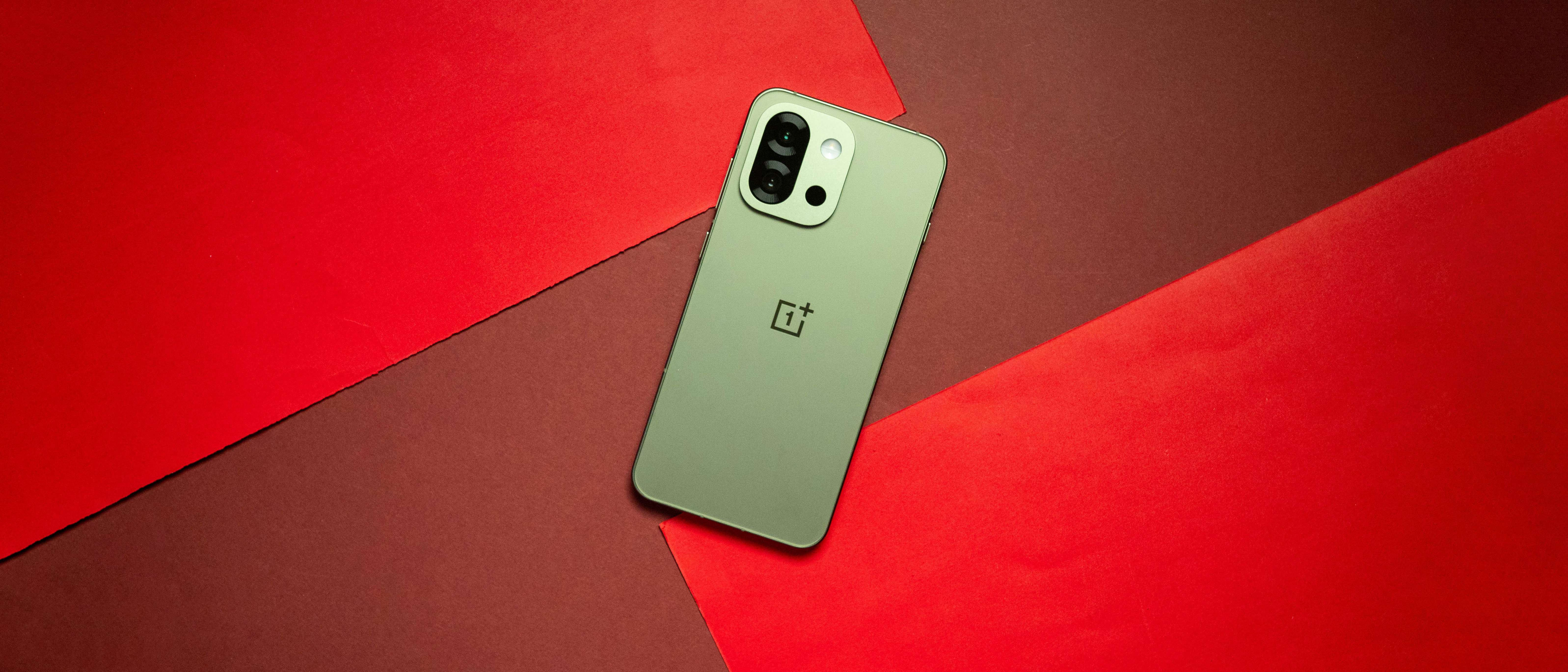Android Central Verdict
I like the idea of the OnePlus 13s; the phone is considerably smaller than the regular OnePlus 13 and 13R, and it just feels good to hold and use. OnePlus isn't shortchanging users with the hardware either, and the device has the same Qualcomm silicon as the regular OnePlus 13. You get the same 50MP camera as the 13R, but there's no wide-angle lens — the 13s has a 2x tele module instead. While the phone has a good in-hand feel, the design is unmistakably iPhone-esque, and I don't like that. Then there's the software; it is frustrating to use, and has far too many bugs and annoyances, with OnePlus turning its attention to buzzword-heavy AI utilities instead of addressing long-standing issues with OxygenOS. There is potential here, but the questionable design along with the software issues make me hesitant to recommend the 13s until OnePlus rolls out an update.
Pros
- +
Ideal sizing
- +
Same hardware as OnePlus 13
- +
Massive battery lasts over a day
- +
Good cameras
Cons
- -
No wide-angle lens
- -
Gets hotter than OnePlus 13R
- -
Dubious AI utilities
- -
Plenty of issues with the software
- -
No alert slider
- -
Plus Key has limited usability
- -
Only IP65 water resistance
Why you can trust Android Central
My wife summed up the OnePlus 13s perfectly: "this just looks like a smaller iPhone, but with Android." That's basically what it is to use the OnePlus 13s; while it is good to see OnePlus making a compact device — the OnePlus X came out a decade ago — the 13s ends up deviating a bit too much from the manufacturer's design language.
Look, I get that most phones these days have a similar design, and I'm okay with that; switching to a flatter profile allows brands to slot in massive batteries, and that's undoubtedly a good thing. But with the 13s, it feels like OnePlus intentionally tried to make a device that's as close to the iPhone as possible, and it isn't just the hardware design — the changes to OxygenOS bring it closer to iOS.
I had the OnePlus 13s for over a month, and I used the device extensively in that time. This is what you need to know about OnePlus' compact flagship, and whether you should pick it up.
OnePlus 13s: Specs, price, and global availability
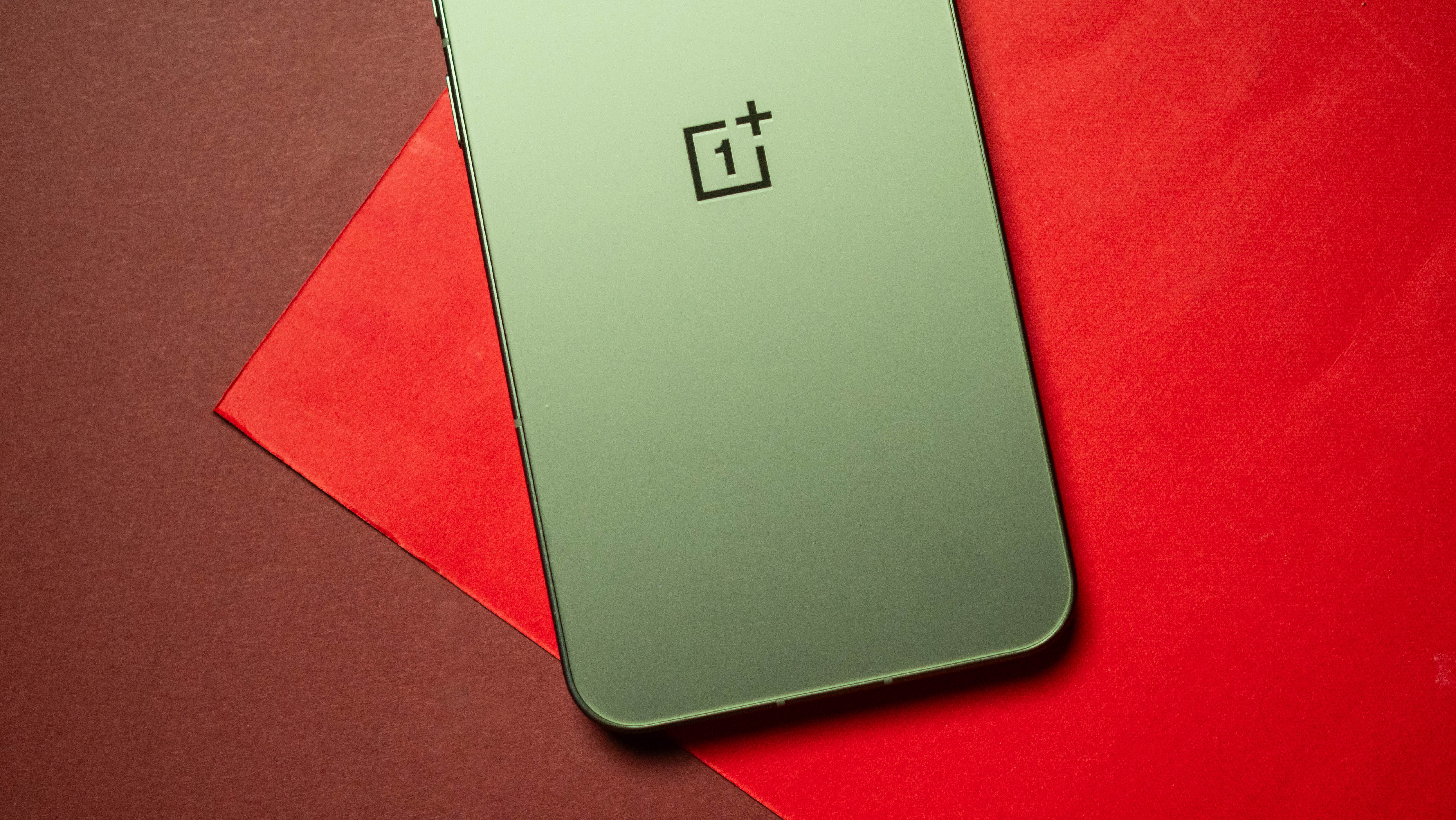
OnePlus unveiled the 13s in India on June 5, and the phone is going on sale in the country in the coming weeks. The device is identical to the OnePlus 13T that debuted in China back in April, with two differences: the 13s has a smaller 5,850mAh battery (the 13T has 6,260mAh), and the 13s gets a 32MP selfie camera with autofocus.
The 13s is available in two configurations: the base model with 12GB/256GB storage is going on sale in India starting at ₹54,999 ($640), and there's also a 12GB/512GB model that costs ₹59,999 ($699). The device basically slots in between the OnePlus 13R and OnePlus 13, and it isn't quite as affordable as I thought it would be.
Why the name change to 13s, you ask? OnePlus says it did so to highlight the fact that this is a smaller phone. As to why it didn't do so in China, your guess is as good as mine. Although the OnePlus 13R is available globally, OnePlus isn't selling the 13s outside India, and the 13T is exclusive to China.
Category | OnePlus 13s |
|---|---|
Display | 6.32 -inch 120Hz LTPO AMOLED, 2640x1216, 1600 nits max |
OS | OxygenOS 15 based on Android 15 |
Chipset | Qualcomm Snapdragon 8 Elite, Adreno 830, 3nm |
RAM | 12GB LPDDR5X |
Storage | 256GB/512GB UFS 4.0 |
Rear camera 1 | 50MP Sony Lytia LYT-700, PDAF, OIS |
Rear camera 2 | 50MP Samsung JN5 tele, 2x optical zoom |
Front camera | 32MP GalaxyCore GC32, autofocus, 4K video |
Ingress protection | IP65 dust and water resistance |
Connectivity | Wi-Fi 7, Bluetooth 6.0, limited 5G bands, NFC, dual-band GPS |
Security | Optical in-screen sensor |
Audio | USB-C, stereo sound, AptX HD, LDAC, LHDC 5.0 |
Battery | 5,850mAh battery, 80W charging |
Dimensions | 150.8 x 71.7 x 8.2mm, 185g |
Colors | Green, Pink, Black |
OnePlus 13s: Design
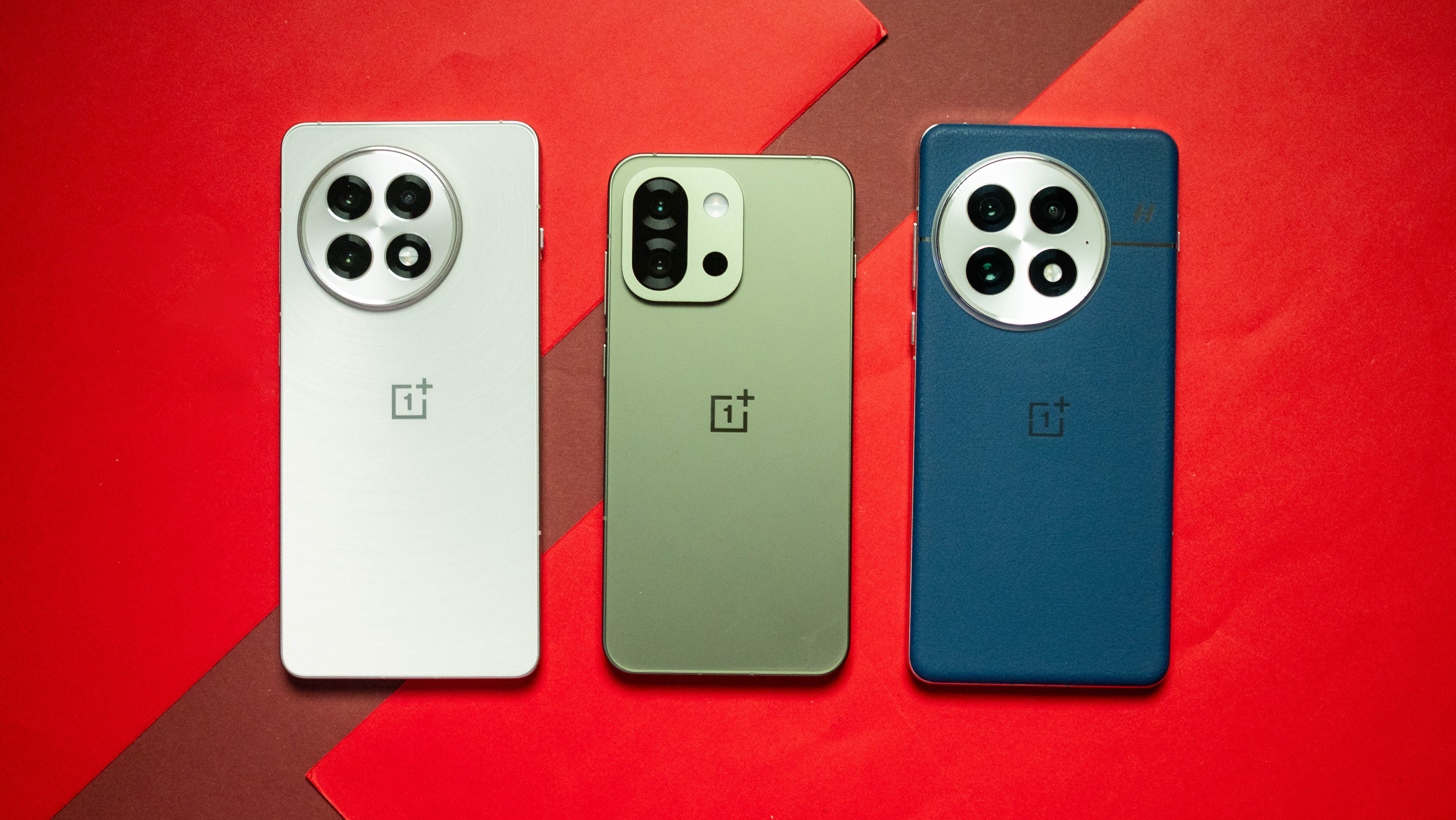
- The OnePlus 13s has a compact design with a good in-hand feel.
- However, the design closely resembles that of an iPhone.
- The phone is limited to IP65 water resistance, and the optical fingerprint sensor isn't in an ideal location.
OnePlus says the 13s has a "stunning new design," but what it actually looks like is an iPhone. Even the OnePlus 13 had a design with flat sides, but it retained the brand's design ethos and managed to stand out. The 13s, meanwhile, has a flatter profile that's unmistakably iPhone, and OnePlus really should have done more to differentiate the design a little bit.
Get the latest news from Android Central, your trusted companion in the world of Android
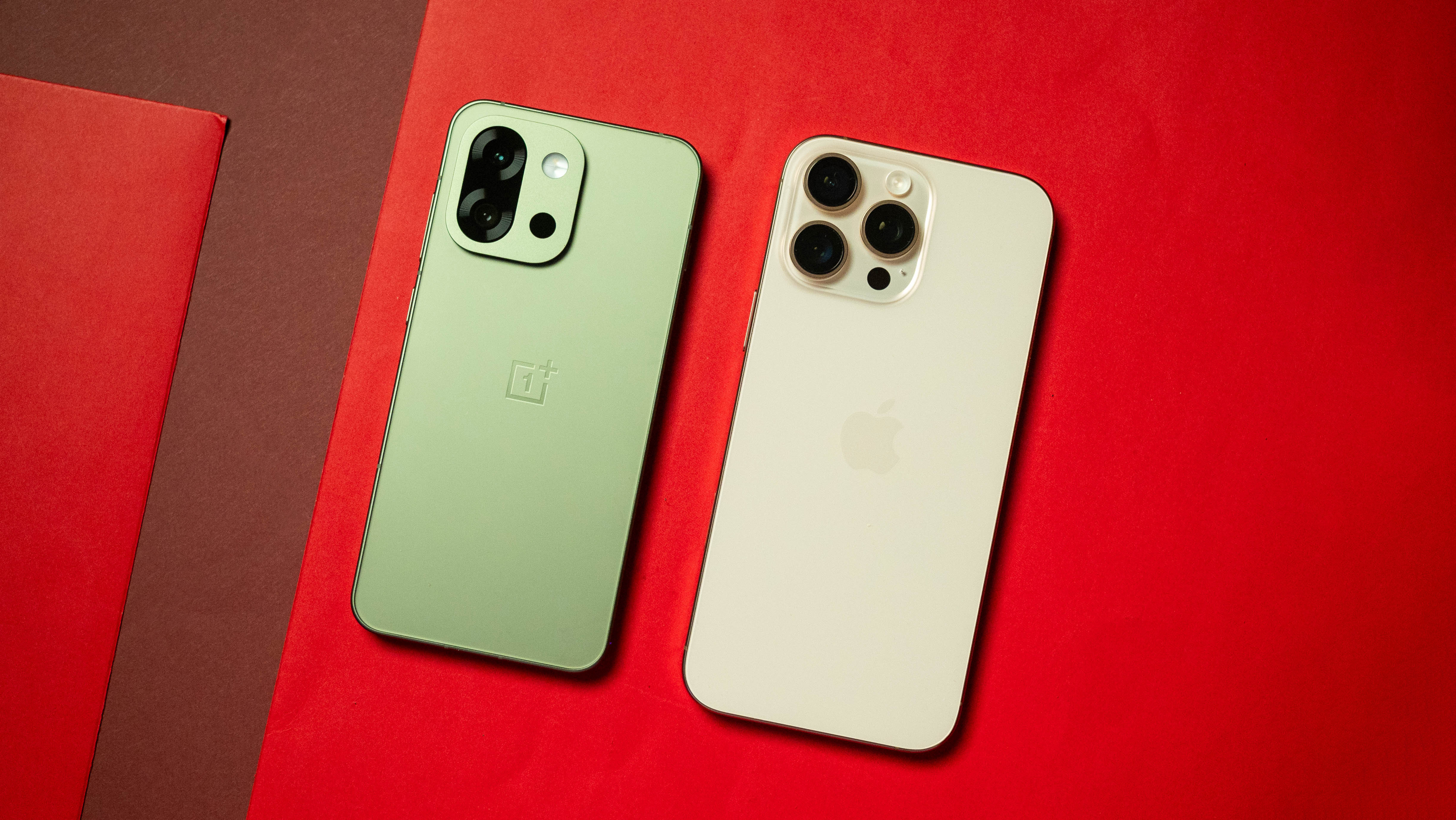
That said, I like the green color variant, and the sizing is just right. With a height of 150.8mm (the OnePlus 13 is 162.9mm) and weighing just 185g, the 13s is a good choice if you need a compact device. The Galaxy S25 is shorter and lighter, but you don't get anywhere as large a battery, and the device isn't quite as good to use.
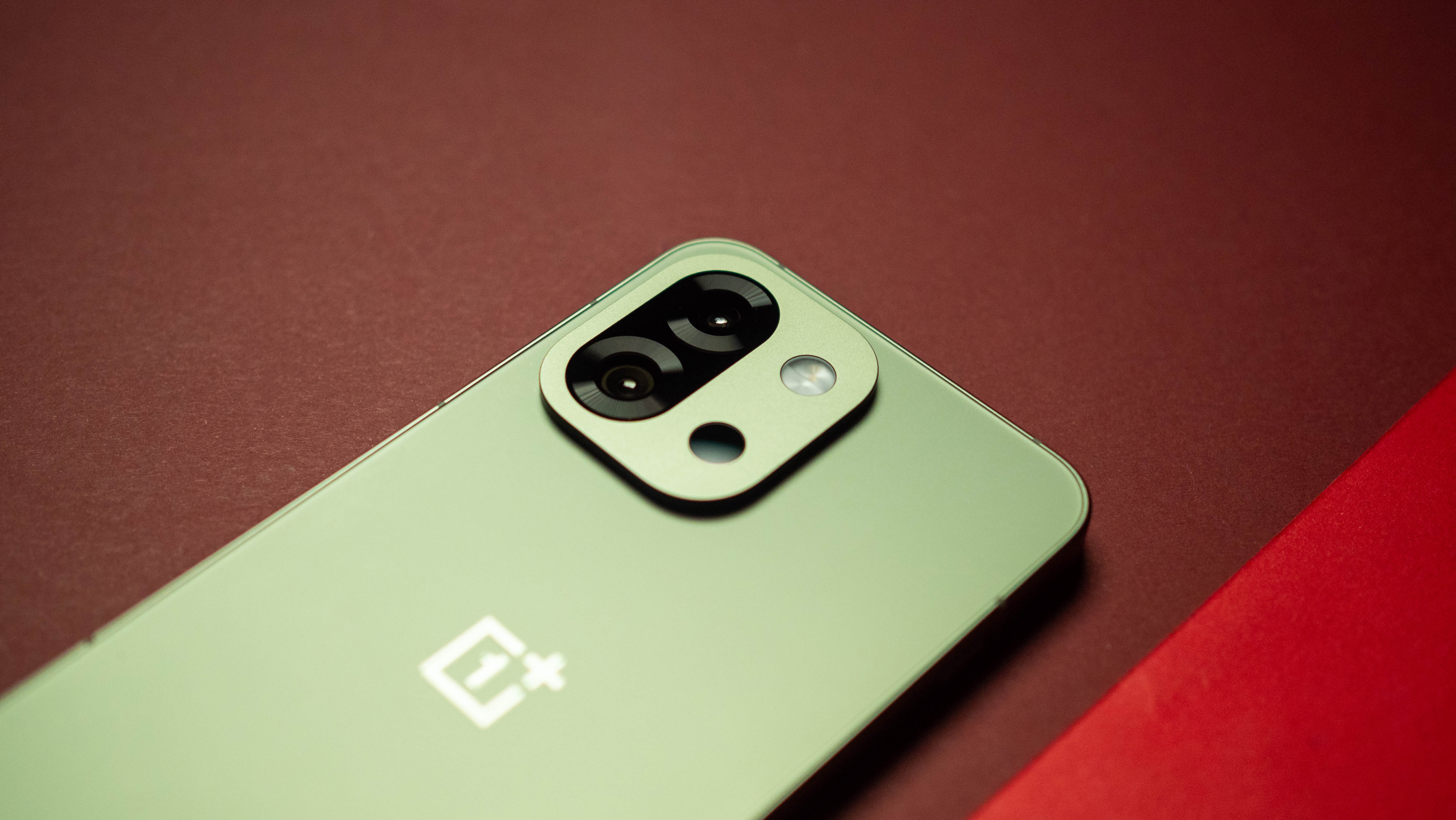
Another positive is that the camera island doesn't protrude too much from the chassis, so there isn't much in the way of wobble when using the phone on a table. The rounded square design looks good, and it highlights the dual cameras at the back. Weight distribution is ideal too, and I didn't see any issues in this regard — just like the standard OnePlus 13.
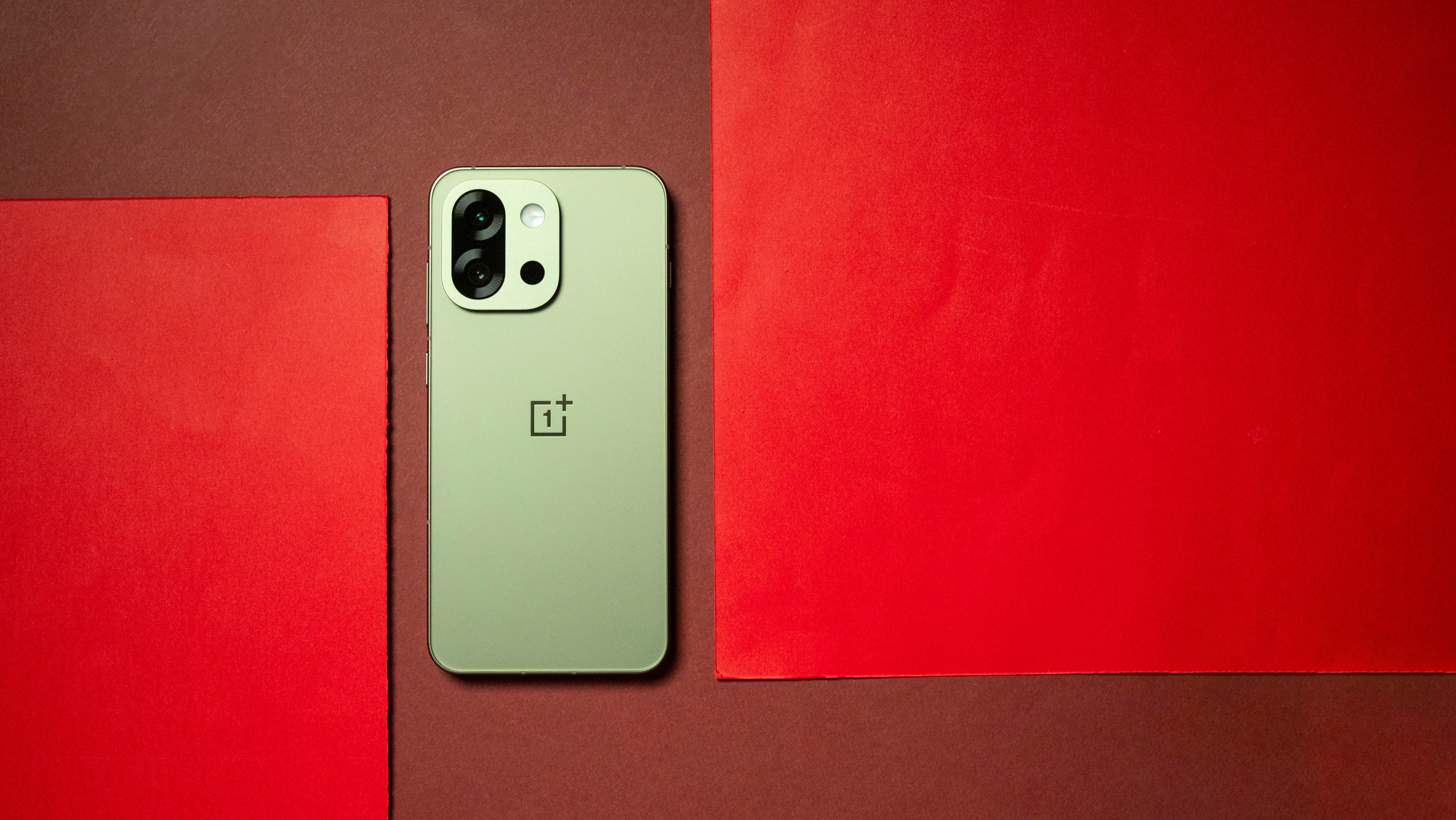
The back is made out of glass and has a frosted glass finish that feels good to hold, and it minimizes smudges. The sides have a matte texture, and they're color-matched to the back. There's also a black model with a matte back if that's more to your liking.
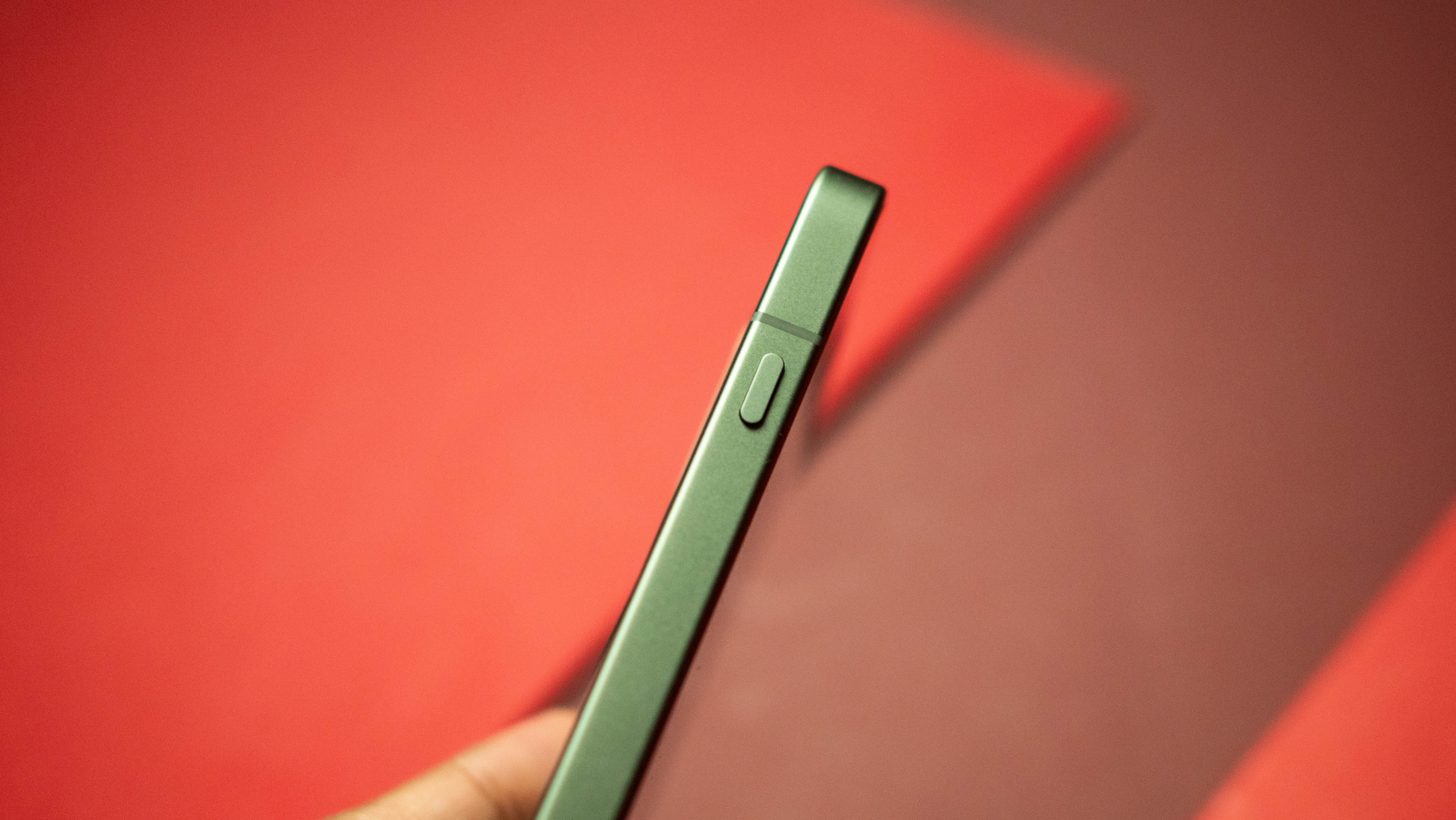
Along with the changes to the design, OnePlus ditched the long-standing alert slider; the 13s instead gets a Plus Key that launches AI Plus Mind, a new AI utility that's similar to what Nothing offers with Essential Space. The design of the Plus Key and the associated software sub-menu is as close to a facsimile of the iPhone's Action Button as I've seen on any device. The button lets you undertake various actions, including launching the camera, translate, enable DND, and toggle the flashlight.
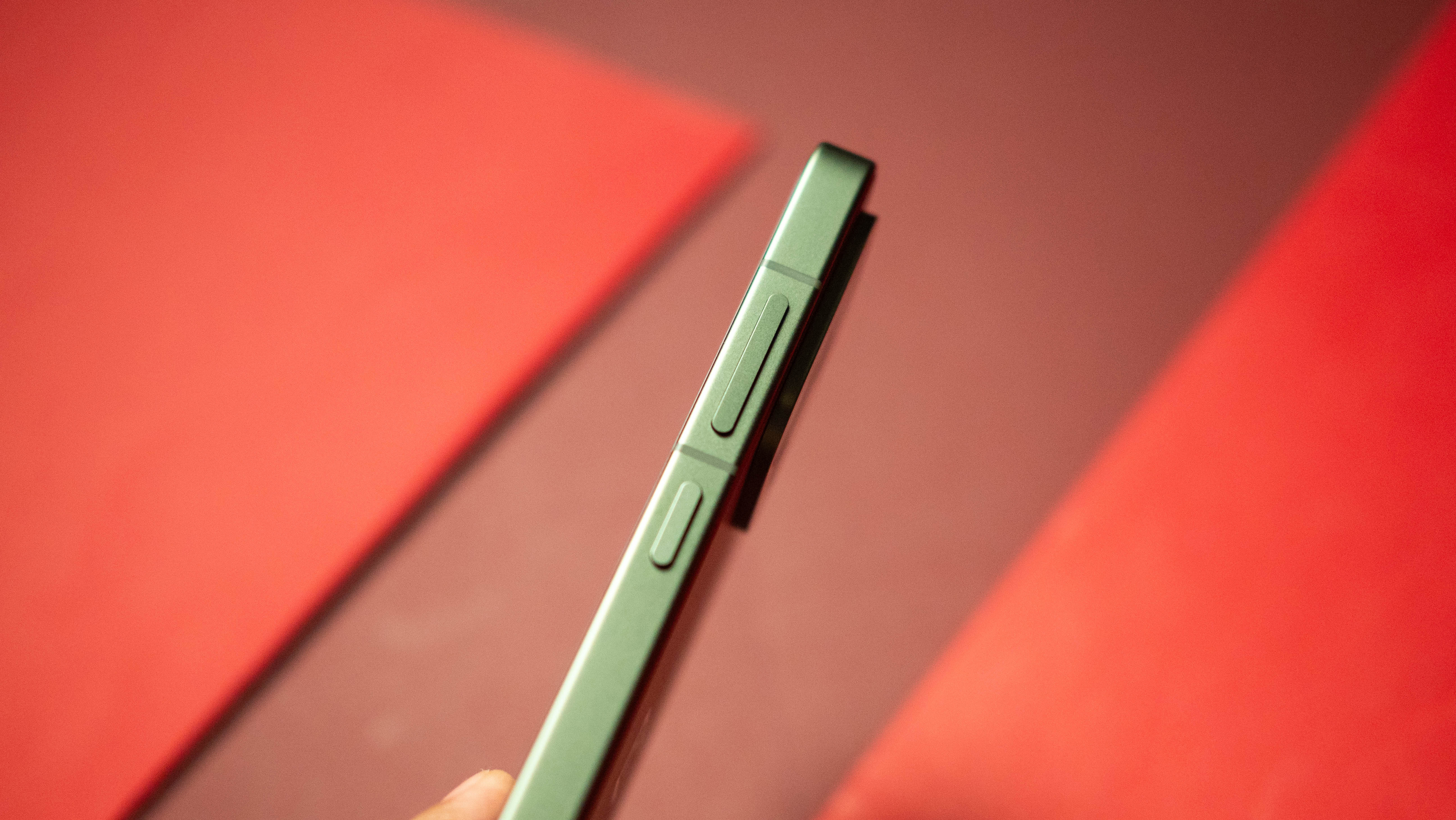
Annoyingly, the button has just a single long press, so you are limited in what you can actually do with the key. I use the alert slider extensively on OnePlus phones, and not having the toggle is frustrating — particularly when you consider the asinine DND mode on the device.
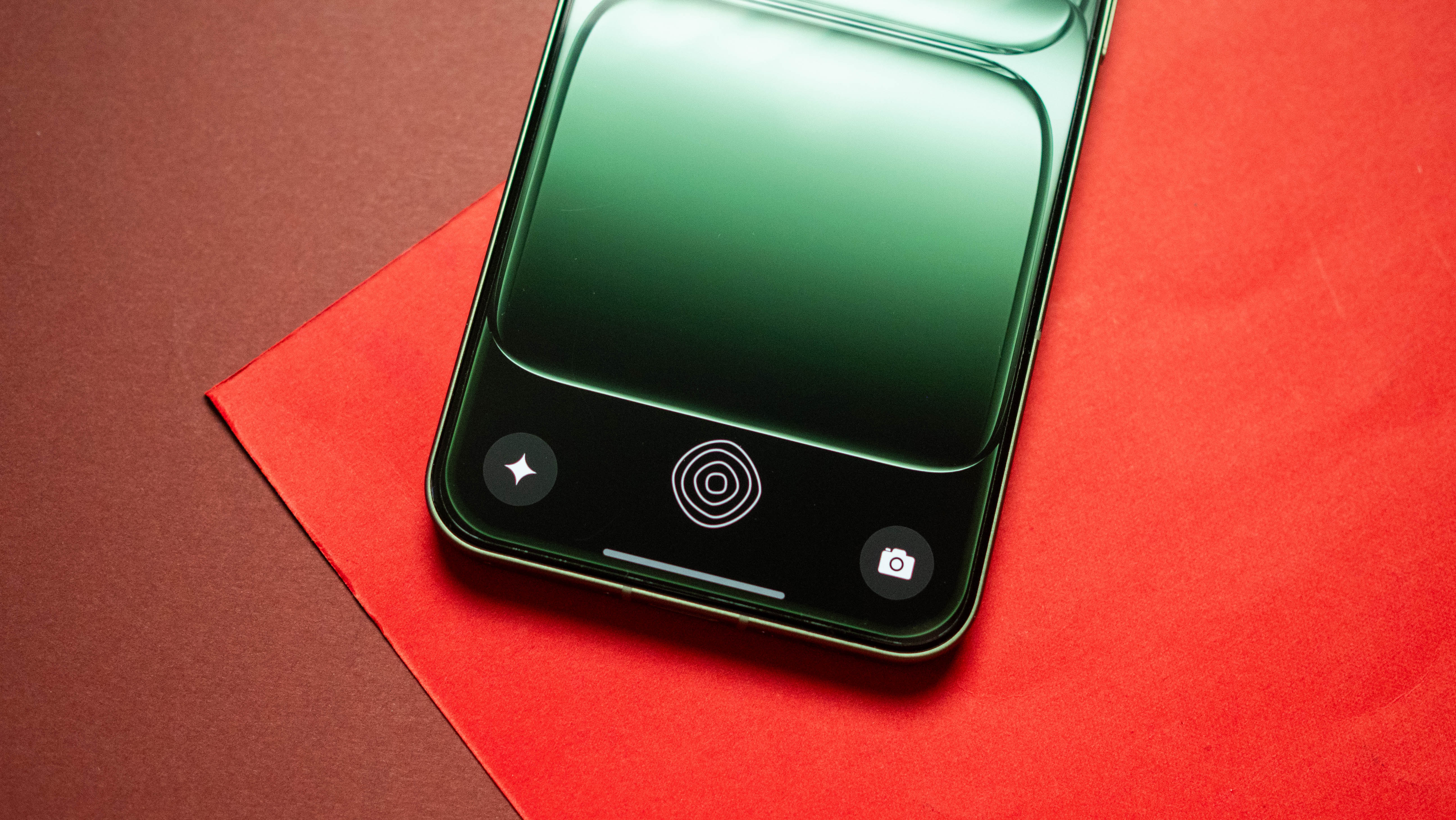
The phone has a standard optical fingerprint module, but it is located far too low on the panel, and that makes it awkward to access. I still don't get why OnePlus just doesn't position this sensor in such a way that it's easy to reach, but this has been an issue on several of the brand's devices in the past as well.
Another limitation is water resistance; the 13s gets IP65 ingress protection, and misses out on IP68 and IP69. It should still withstand the occasional splash of water, but it isn't designed to be submerged in the pool or a bathtub.
OnePlus 13s: Display
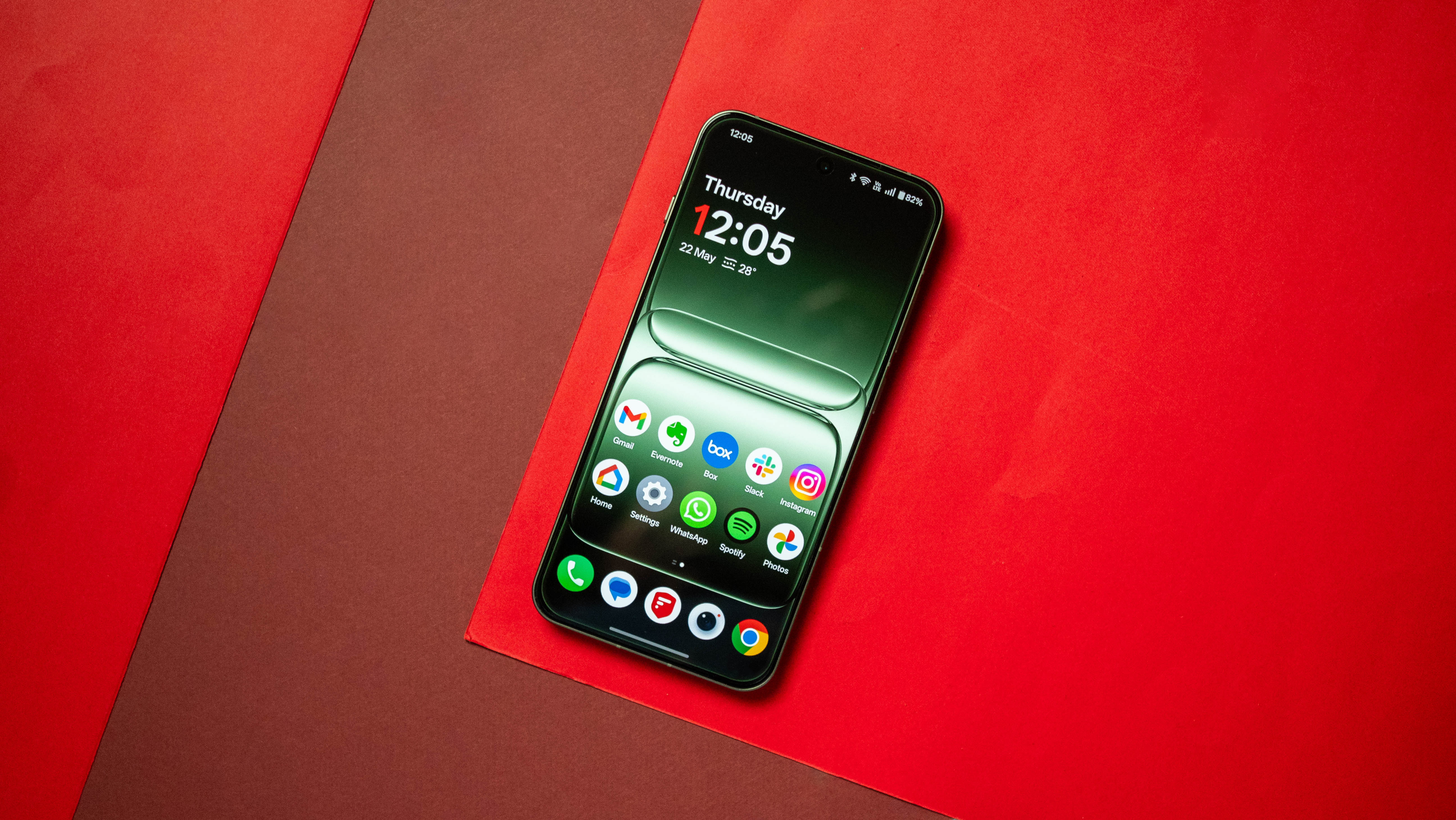
- The 6.32-inch AMOLED panel has good colors and vibrancy.
- It doesn't get as bright as the regular OnePlus 13.
The key differentiator of the OnePlus 13s is the compact chassis; the phone gets a 6.32-inch AMOLED panel, and to put things into context, the regular OnePlus 13 has a 6.82-inch display. You still get 120Hz refresh alongside Dolby Vision and good colors, but it doesn't quite get as bright as the regular model.

That said, I didn't have any issues using the panel outdoors; it may not win any awards, but it holds up well in daily use. What I like is that the bezels are razor-thin, so you get a decent-sized panel in a phone that's considerably smaller than its rivals. The phone gets a 1.5K resolution (2640 x 1216), and has 2,160Hz dimming, Aqua Touch mode that lets you use it even with wet fingers, and it goes down to as low as 1.1 nits at night.
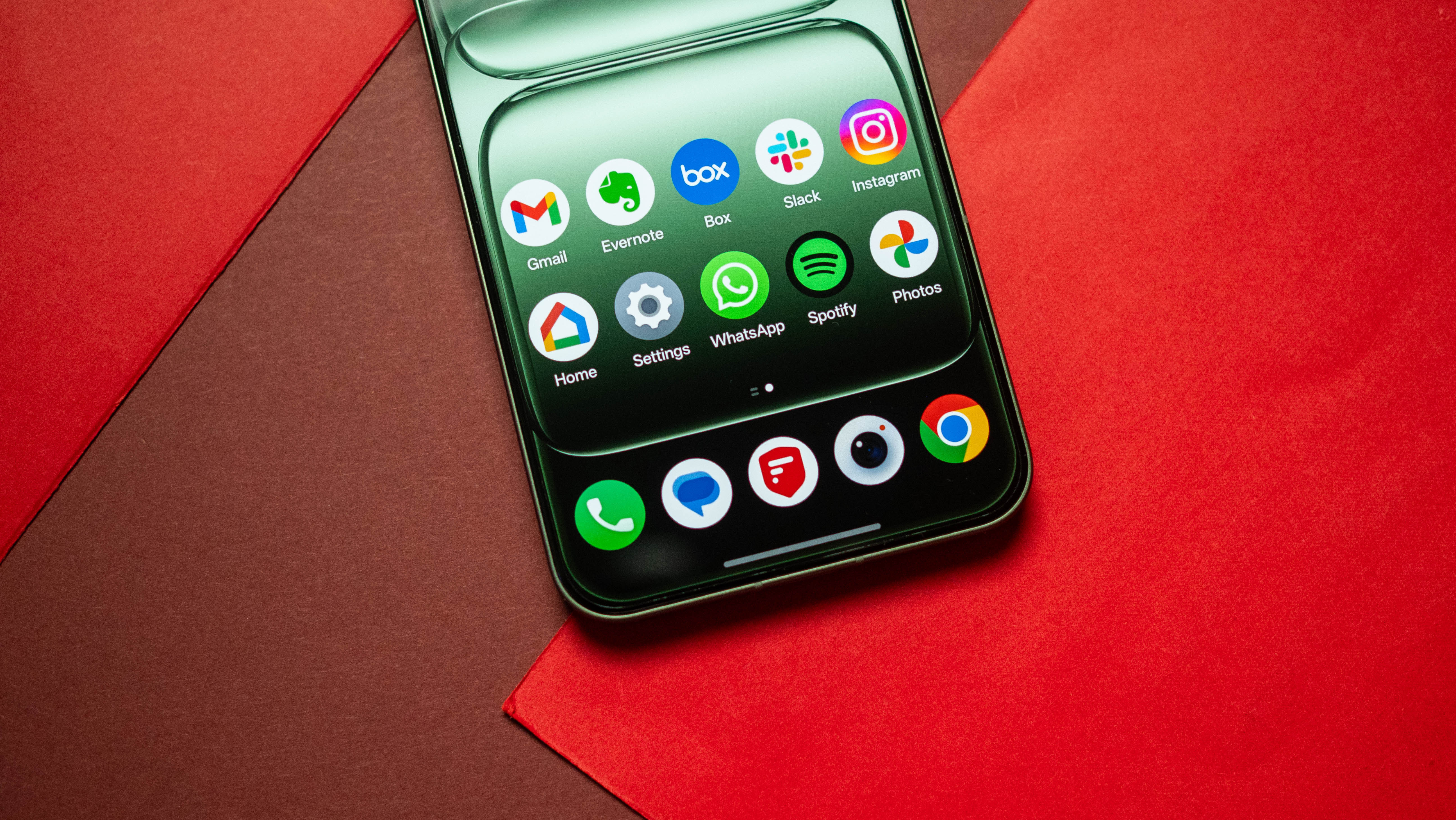
You get the same level of customizability as other OnePlus phones, and the 13s does a good job in gaming; the smaller size isn't quite as immersive, but it doesn't have any outward limitations as such — beyond the 60fps throttling that's on all OxygenOS devices. Thankfully, BGMI goes up to 120fps, but that's the only game that does.
OnePlus 13s: Hardware
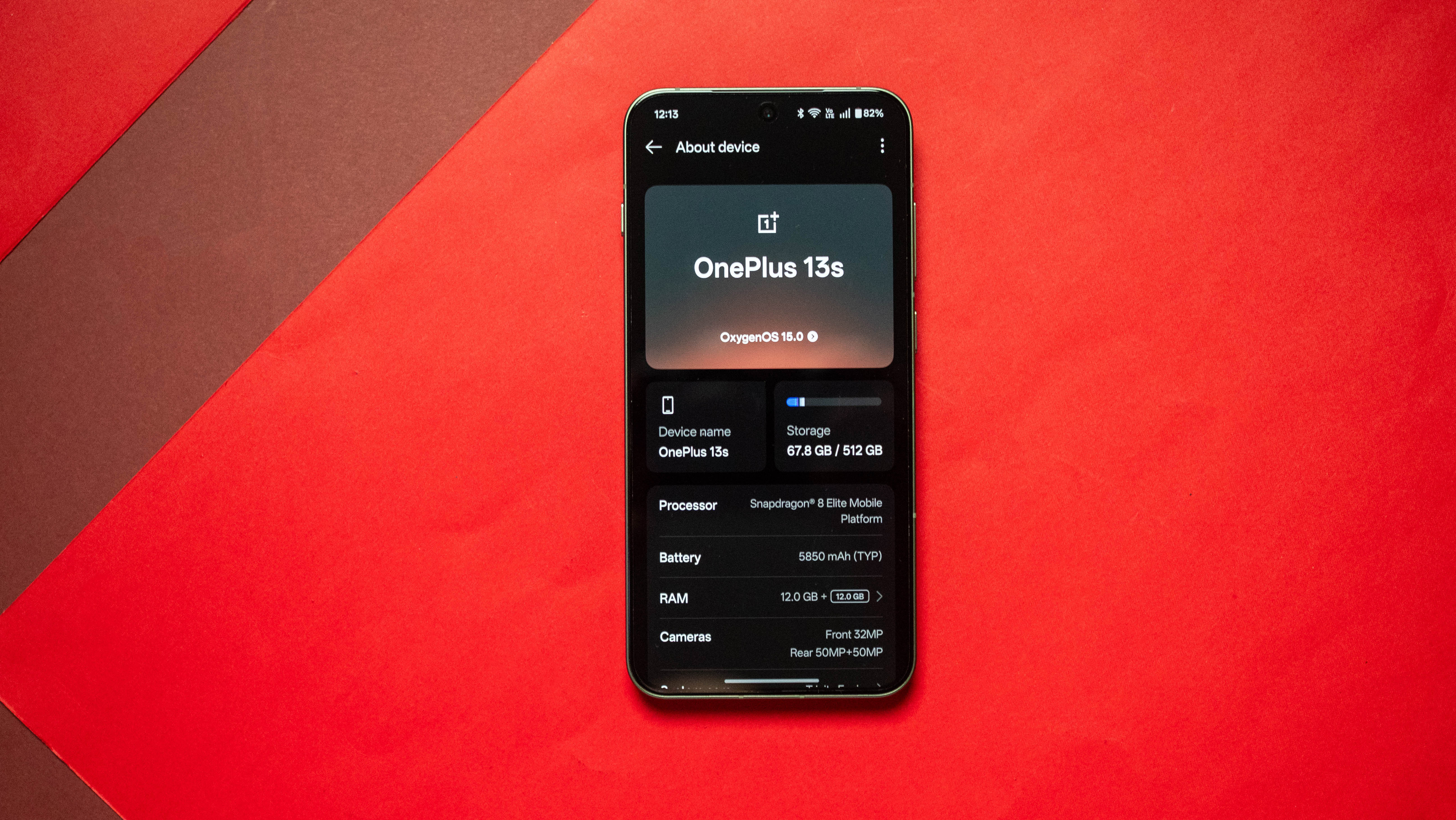
- You get the same Qualcomm silicon as the OnePlus 13.
- OnePlus says it is using better antennae, but I had issues with connectivity.
The OnePlus 13s gets the same Qualcomm Snapdragon 8 Elite as the regular OnePlus 13, and it comes with 12GB of LPDDR5X RAM and 512GB UFS 4.0 storage. Overheating is an issue in smaller phones as there's just not enough room to house a sizeable liquid cooling unit, but the 13s does a good job in this regard, managing effective heat dissipation thanks to a vapor chamber and graphite layer that's attached to the back.
However, the device tends to get hot during gaming, and even in a few mundane scenarios, I saw the back get warm. The phone got up to 53 degrees Celsius after a 30-minute gaming session, six degrees hotter than the OnePlus 13R and 11 degrees more than the iQOO 13, which has the same Qualcomm platform.
Category | OnePlus 13s | OnePlus 13R | iQOO 13 |
|---|---|---|---|
Geekbench 6 (single-core) | 2870 | 2093 | 2954 |
Geekbench 6 (multi-core) | 8453 | 6246 | 6650 |
Geekbench AI (Quantized Score) | 3641 | 3041 | 3915 |
3DMark Wild Life Extreme (score) | 6062 | 4550 | 4514 |
3DMark Wild Life Extreme (FPS) | 36.3 | 27.25 | 27.025 |
3DMark Solar Bay (score) | 11061 | 8075 | 7287 |
3DMark Solar Bay (FPS) | 42.06 | 30.71 | 27.695 |
There is noticeable throttling as well, and again, that's to manage thermals and prevent overheating. The phone does a great job in gaming thanks to the powerful hardware, but it doesn't quite have the same overhead as the OnePlus 13 when it comes to extended gaming.
The vibration motor is decent enough, and while it isn't as good as a flagship, you still get good feedback. I had a few issues with connectivity; the phone wasn't able to stay connected to my home network consistently, and calls weren't quite as clear. This could be a case of positioning of the RF front-end modules to accommodate for the smaller chassis, and even with cellular data, I didn't get the same bandwidth as the OnePlus 13.
OnePlus 13s: Battery life

- The phone misses out on a silicon battery.
- Even then, the 5,850mAh battery lasts all day, and has 80W charging.
Even though this is a compact device, the OnePlus 13s gets a 5,850mAh battery that lasts all day with ease. I managed to get over a day with medium use, and even with heavy use, I got to the end of the day without having to charge the battery. It uses the standard 80W charging tech, and it takes just under 50 minutes to charge.
Annoyingly, the 13s has a regular battery and misses out on silicon-carbon tech — unlike the 13T. OnePlus says it invested in the selfie camera instead, delivering a module with autofocus, while the Chinese model gets a 6,260mAh battery. Given the choice, I would have wanted a bigger battery (I don't use the selfie camera much), but it's clear that OnePlus wanted to differentiate the camera instead.
OnePlus 13s: Cameras
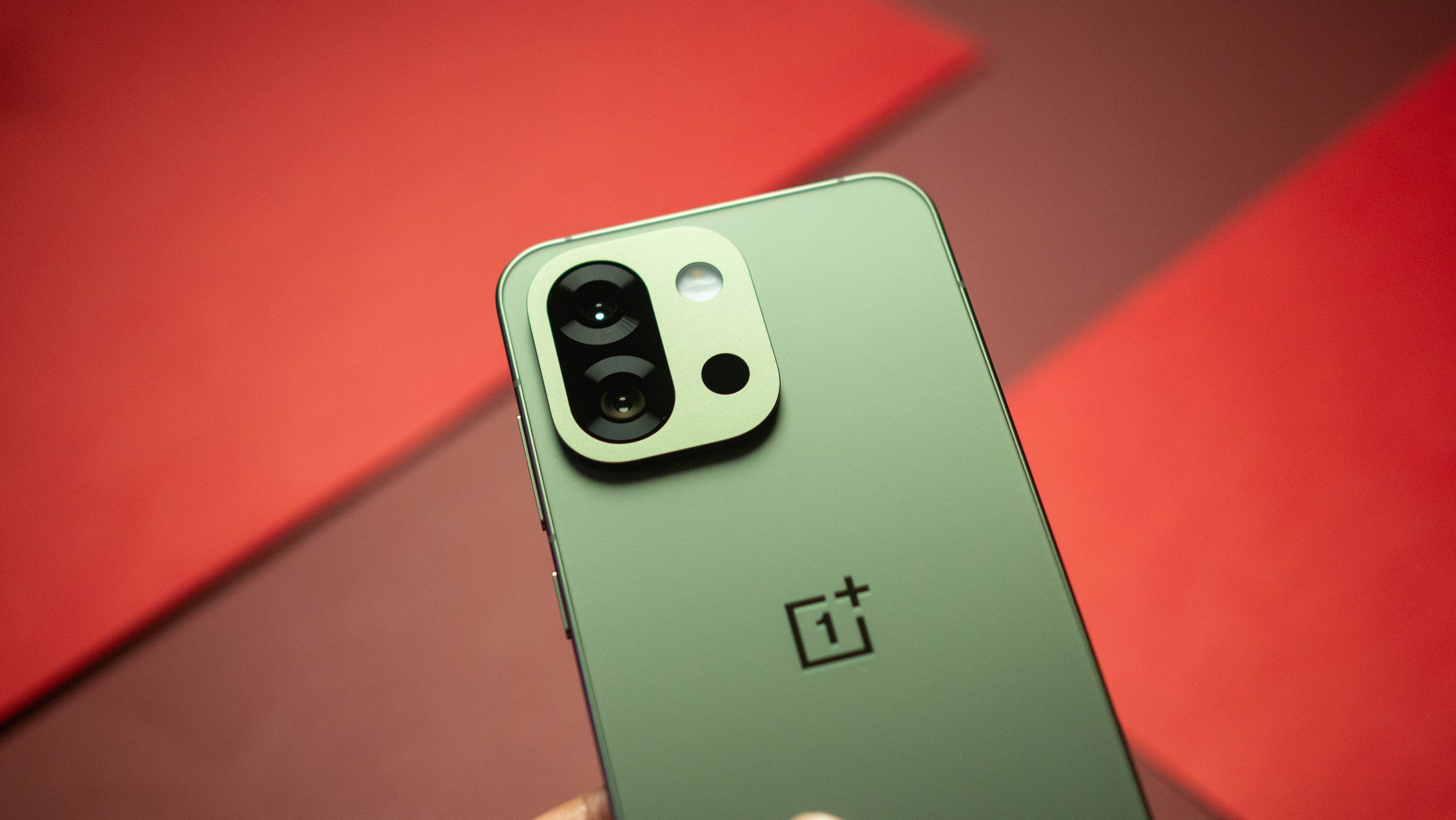
- The 13s has the same main camera as 13R.
- You don't get a wide-angle lens, but the selfie camera has autofocus and 4K video.
The OnePlus 13s has a 50MP Sony LYT-700 sensor — same as the OnePlus 13R. That's joined by a 50MP Samsung JN5 telephoto lens with 2x optical zoom, but it misses out on OIS. You just get the two cameras, and there isn't a wide-angle lens. The selfie camera is a 32MP GalaxyCore GC32 with autofocus and 4K video.
The camera interface is unchanged, and you get the usual toggles and filters. The phone shoots 4K60 video with the main and tele lenses, and you get Dolby Vision video as well. There's a manual mode and custom filters, and just like the 13R, it misses out on all the Hasselblad extras.

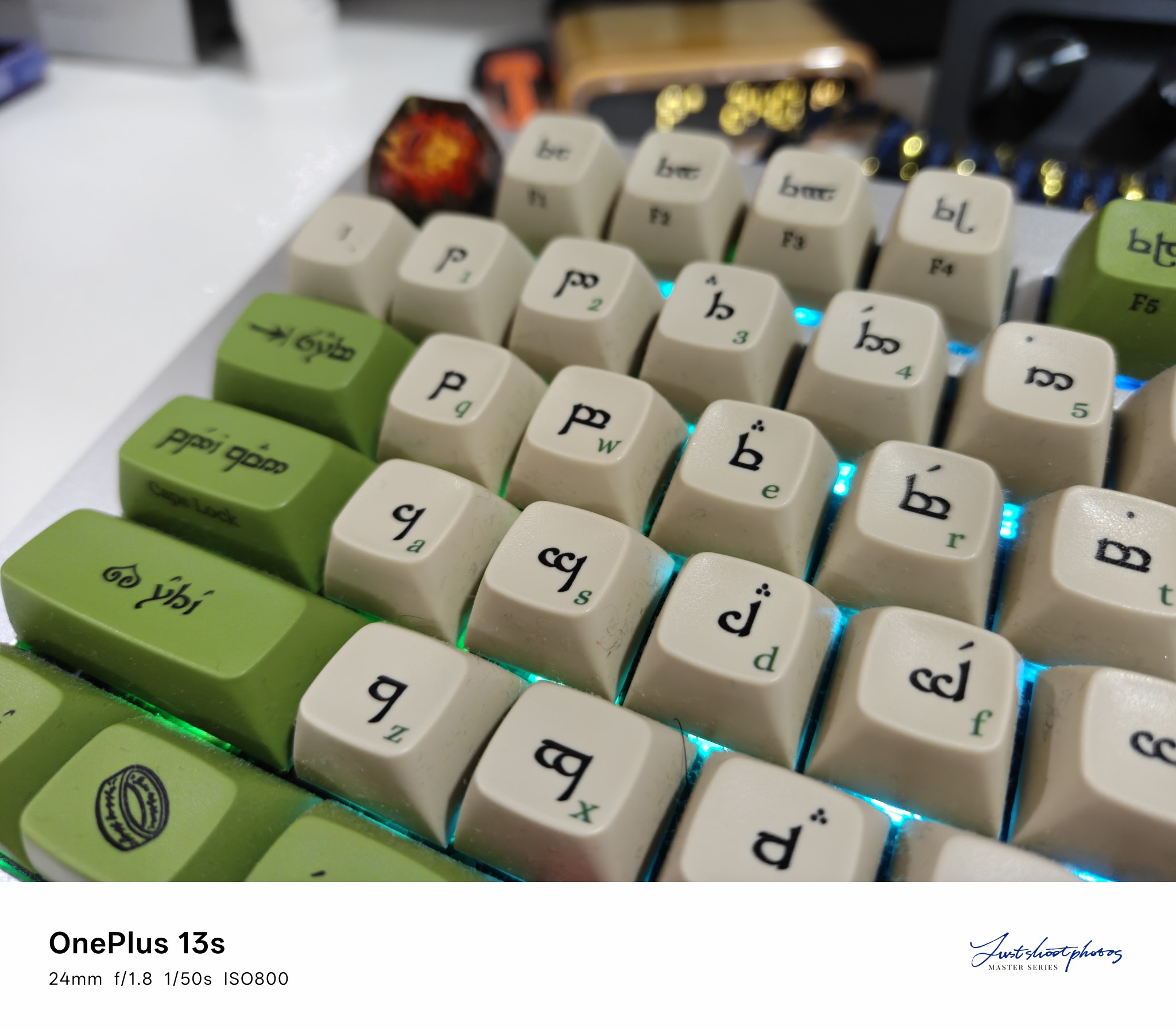
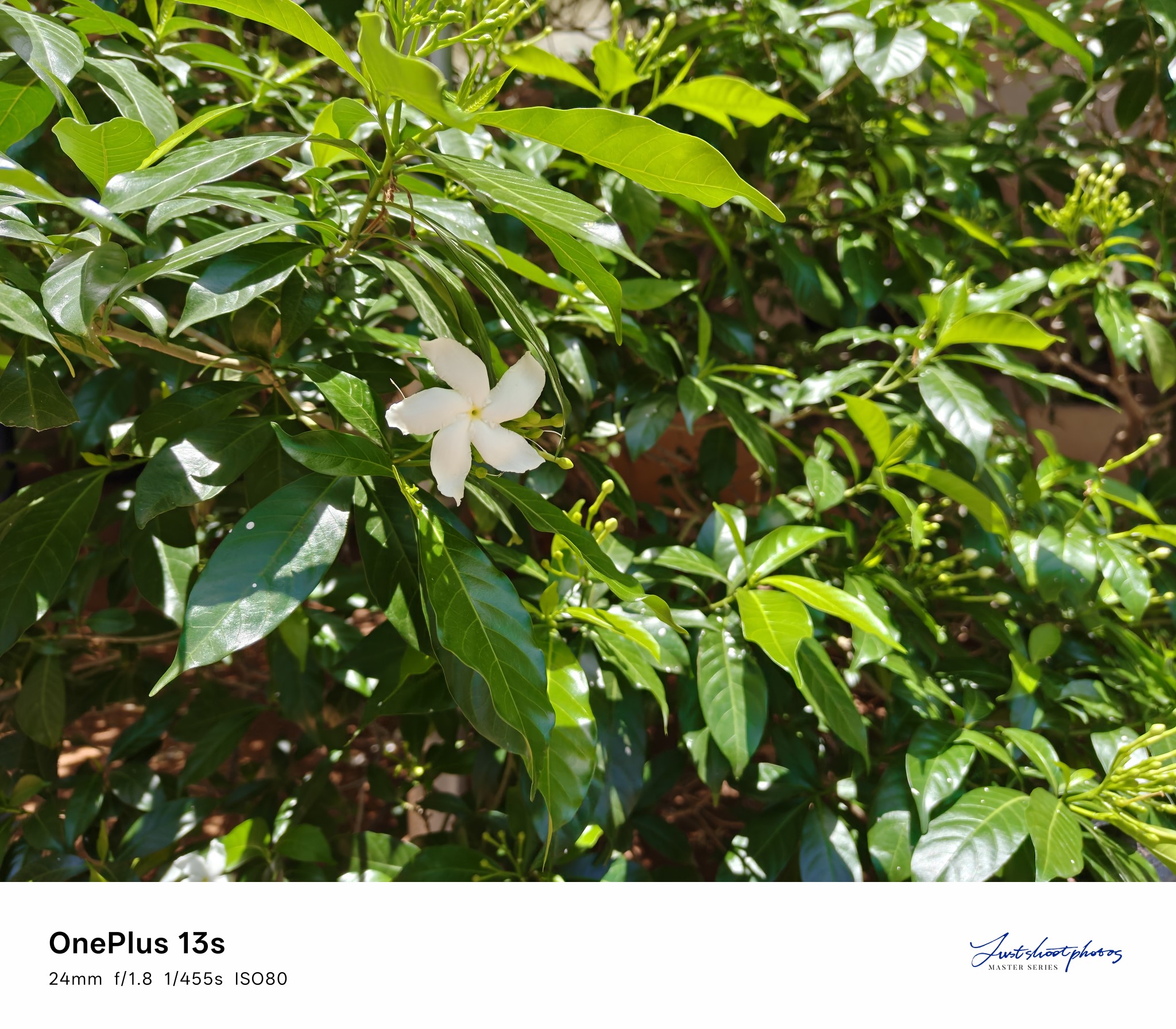
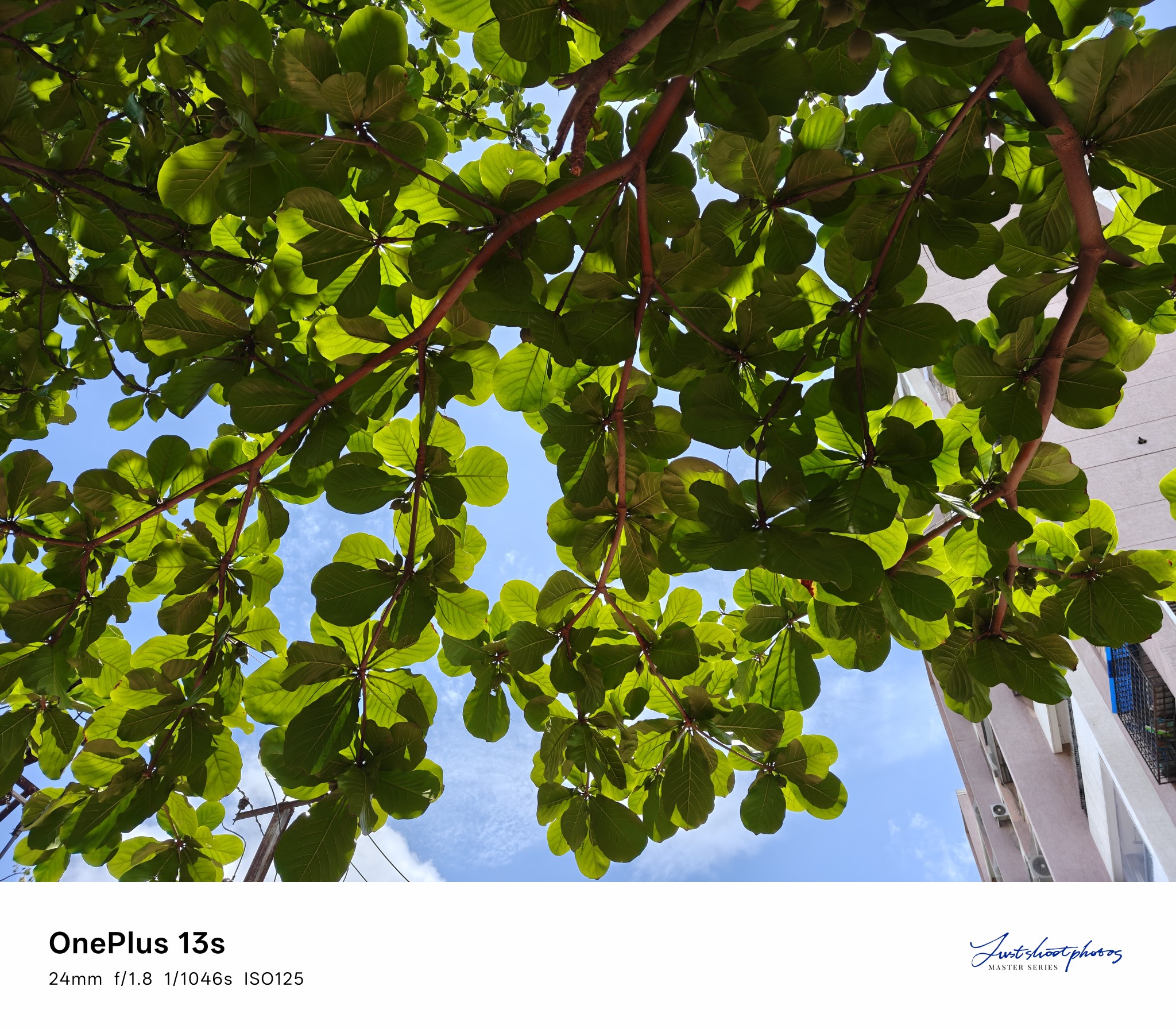
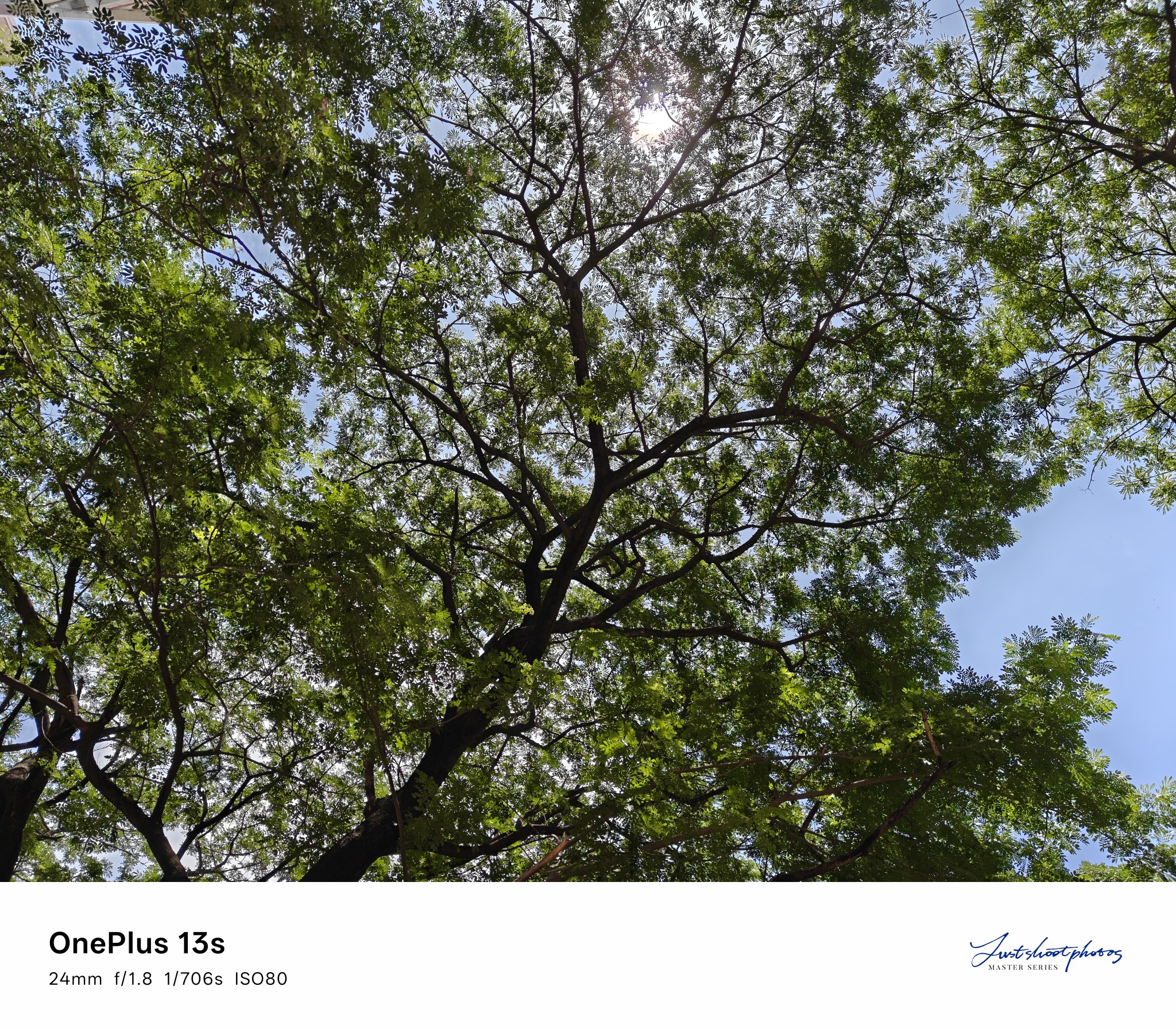



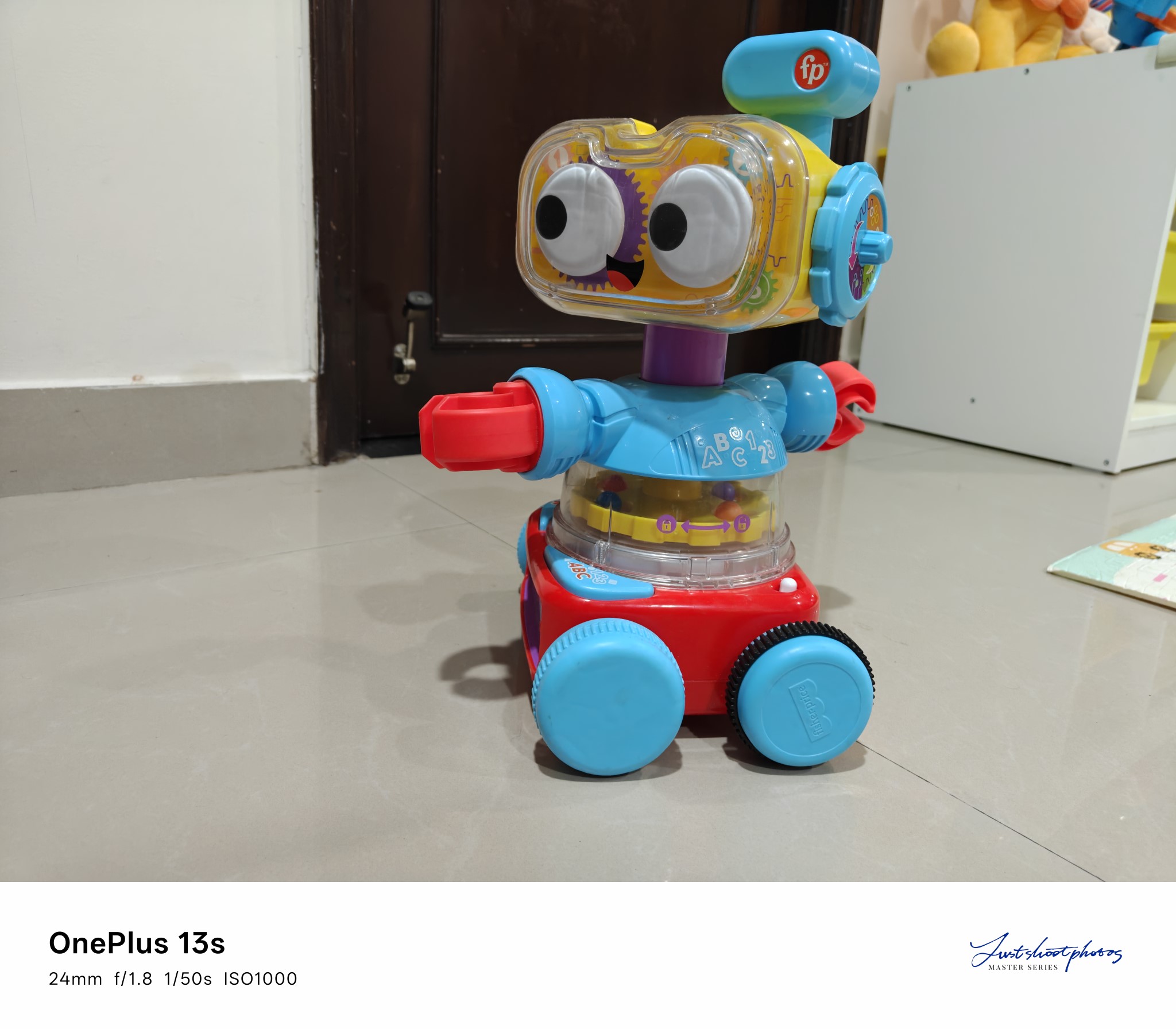


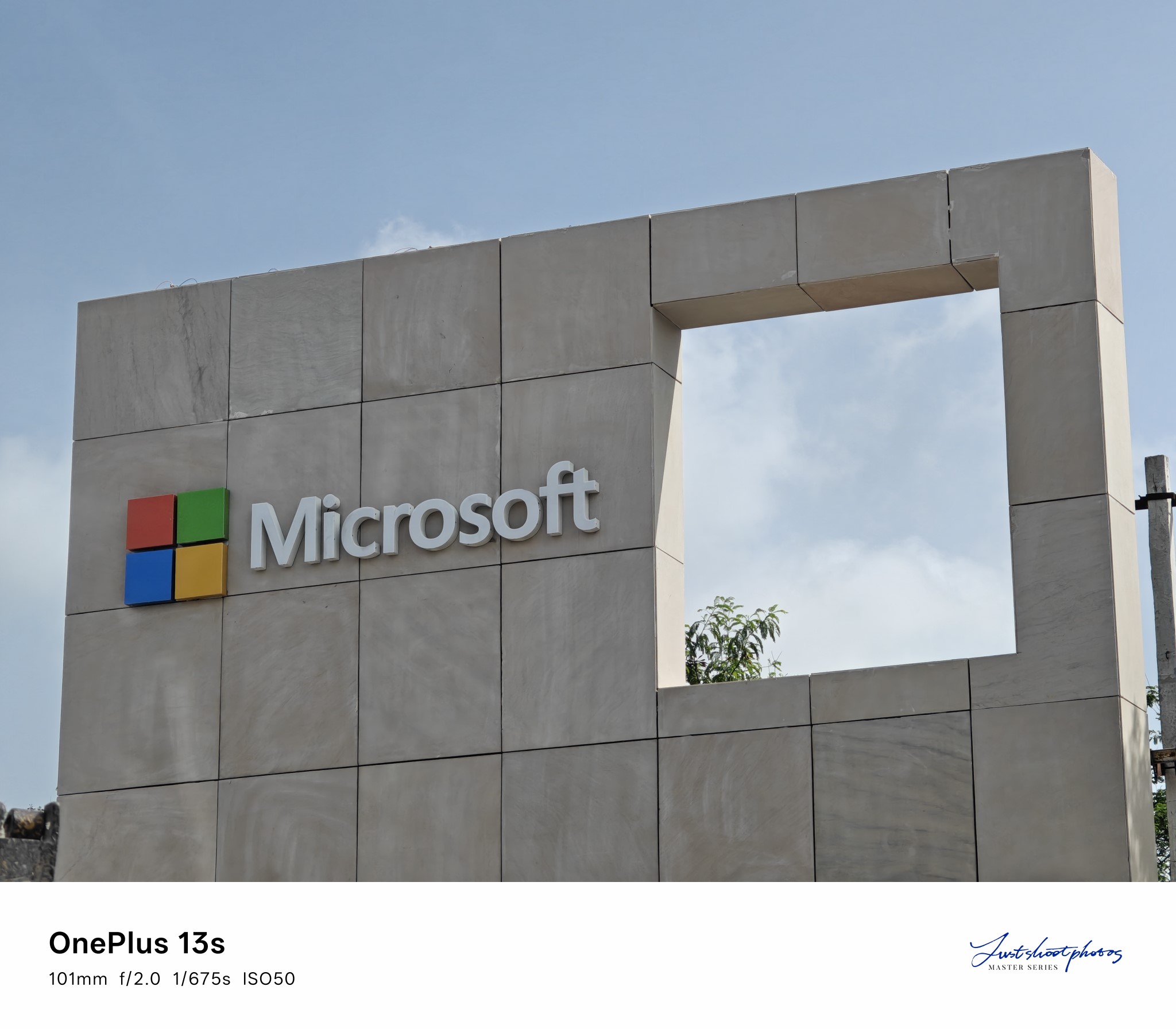
The main camera does a great job in daylight situations, delivering photos with high contrast and vibrant colors. There's an oversaturated look to the images that looks good when shared on social media, and the sensor does just as well in challenging scenarios, producing shots with minimal noise.
The 2x tele lens is quite decent as well, and you get usable shots at up to 4x without any artifacting. I got good portrait shots out of the main camera, and while you don't get as much versatility as the OnePlus 13, this is a reliable shooter.
OnePlus 13s: Software

- The OxygenOS 15 software gets a new set of AI utilities.
- AI Plus Mind is a decent idea, but it doesn't have much usability.
- There are plenty of bugs and glitches out of the box.
Like the OnePlus 13, the 13s runs OxygenOS 15 based on Android 15. OnePlus made several changes to the software this year, and the design brings it closer to iOS. A new addition is AI Plus Mind, a feature that collates photos, notes, and other data in a single location. If you have any information you'd like to save — bills, event QR codes, and so on — just press and hold the Plus Key, and it gets saved to Mind Space.
The utility uses machine learning to extract relevant information. If that sounds familiar, it's because Nothing's Essential Space basically does the same thing, and if anything, Google's Pixel Screenshots has a similar utility. I'll admit that it is useful in certain scenarios, but as of now, it doesn't do much other than summarizing information.

You can't take your data out either, so it is tied to the device. As it stands, there isn't much to justify the feature, but it's clear that the manufacturer sees AI as a point of differentiation (like every other phone brand), so it should get better features in the coming months.
Most of the time, using the software on the 13s was an exercise in frustration. I migrated data from the Vivo X200 Pro, but it didn't install everything — basic apps like Amazon and Swiggy didn't show up, and I had to go to the Play Store and download these again. This is never an issue on other devices, but I ran into the same problem on the OnePlus 13 earlier this year, so I'm highlighting it.
Background memory management continues to be very aggressive, so if you have an app in the background, it will be shut down after a few hours. There is intermittent lag when browsing in Chrome, and it could just be a case of the device not being optimized ahead of launch, as I didn't see this issue on the regular model.
And then there's the usual AI-backed features. You get AI Search and AI transcribing along with translation, and they do a decent enough job. There's a new AI Call Assistant, and it is meant to provide real-time translation. I tested it with Hindi to English, and it just didn't do a good enough job translating the call on the fly; the resultant text was wrong in many areas, and it wasn't able to handle entire sentences.
Coming to updates, the 13s will get the standard four years of Android updates alongside six years of security patches.
OnePlus 13s: The alternatives
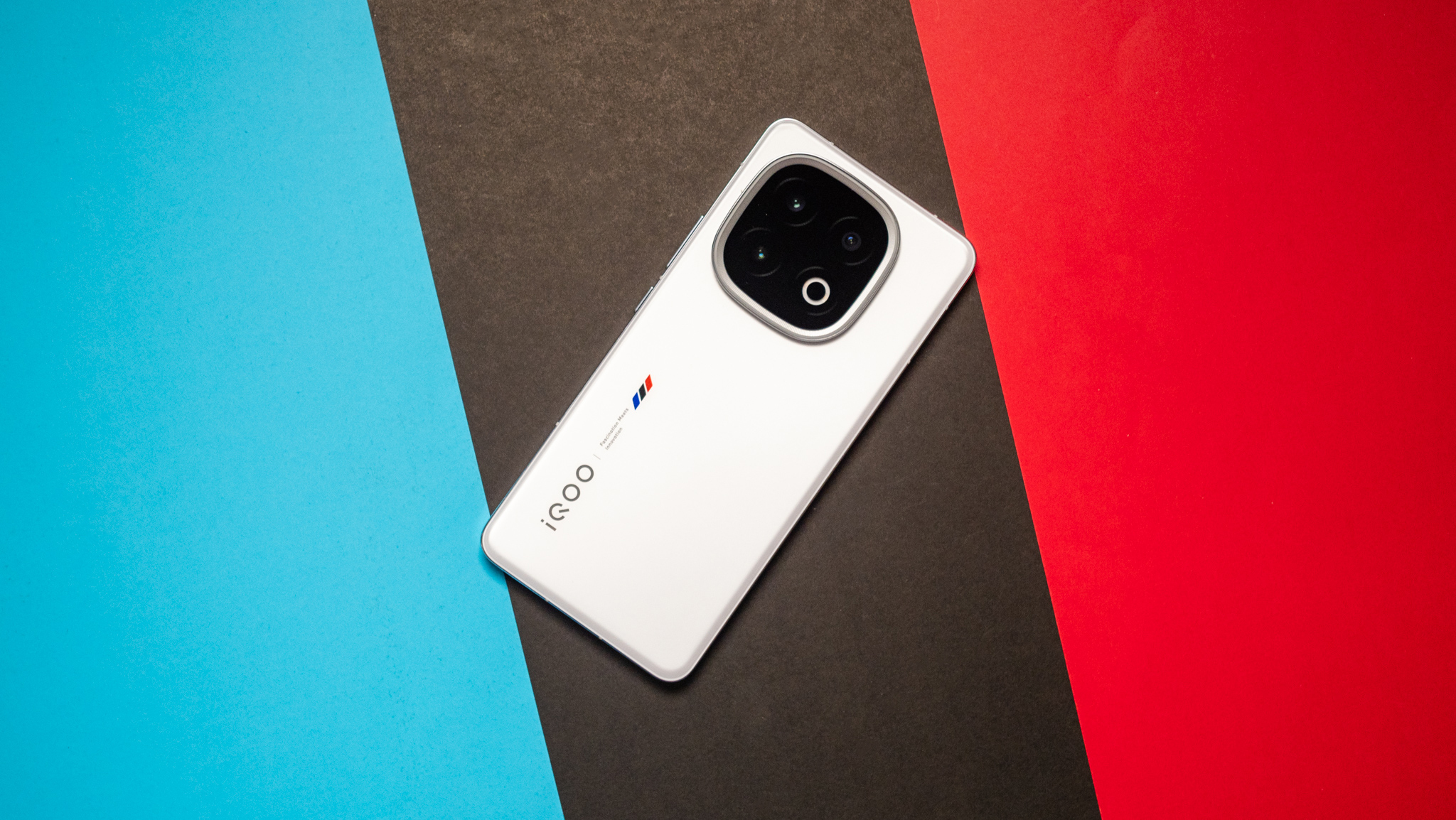
I like the OnePlus 13R, and although it isn't as fast as the 13s, you won't notice any difference in daily use, and it has a bigger AMOLED panel and larger battery. It is available in the U.S. and other global markets as well, and is a better value all things considered.
If you need the same Qualcomm hardware, I'd suggest getting the iQOO 13 instead. It costs the same in India, and it has a bigger battery, brighter AMOLED panel, and the cameras are much better than previous generations. It is better-suited as a gaming device.
OnePlus 13s: Should you buy it?

You should buy this if:
- You need a powerful compact phone
- You want reliable battery life
- You want a good camera at the back
You shouldn't buy this if:
- You want bug-free software
- You're used to the alert slider
- You need meaningful AI features
On the whole, the OnePlus 13s doesn't do enough to merit a recommendation; the compact design and high-end hardware is a clear differentiator, and there's a distinct dearth of such devices today. You get standout battery life, and the main camera takes good photos and videos.
That said, I'm not a fan of the design or the software. OxygenOS 15 is now veering so close to iOS that it just doesn't have any originality left, and there are enough annoyances with bugs that it wasn't enjoyable to use the phone. I'm sure these will be resolved a few weeks after the phone goes on sale — that's always been the case in the last three years — but I don't see why these couldn't be addressed beforehand, like every other phone manufacturer is able to do.
Most of the time, I felt like I was beta testing the 13s. The OnePlus 13 continues to be an outlier in that it didn't have any of these issues out of the box, and with the 13s, OnePlus is back to its usual shenanigans of launching a phone before it's ready. If you're willing to wait a few weeks (or even months), then the 13s has the potential to be a decent enough choice in this category. But as it stands, it just doesn't measure up.

Harish Jonnalagadda is Android Central's Senior Editor overseeing mobile coverage. In his current role, he leads the site's coverage of Chinese phone brands, networking products, and AV gear. He has been testing phones for over a decade, and has extensive experience in mobile hardware and the global semiconductor industry. Contact him on Twitter at @chunkynerd.
You must confirm your public display name before commenting
Please logout and then login again, you will then be prompted to enter your display name.
